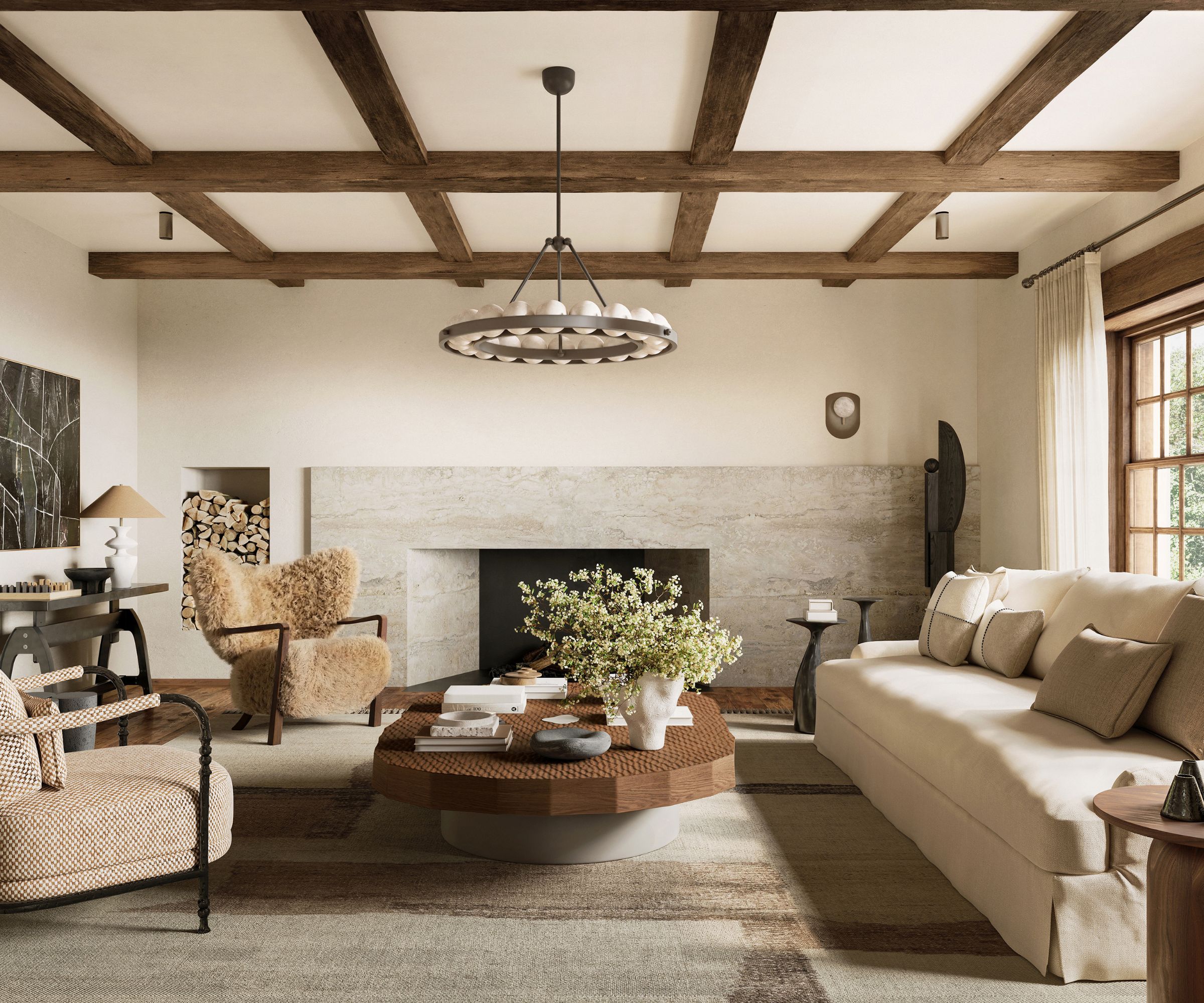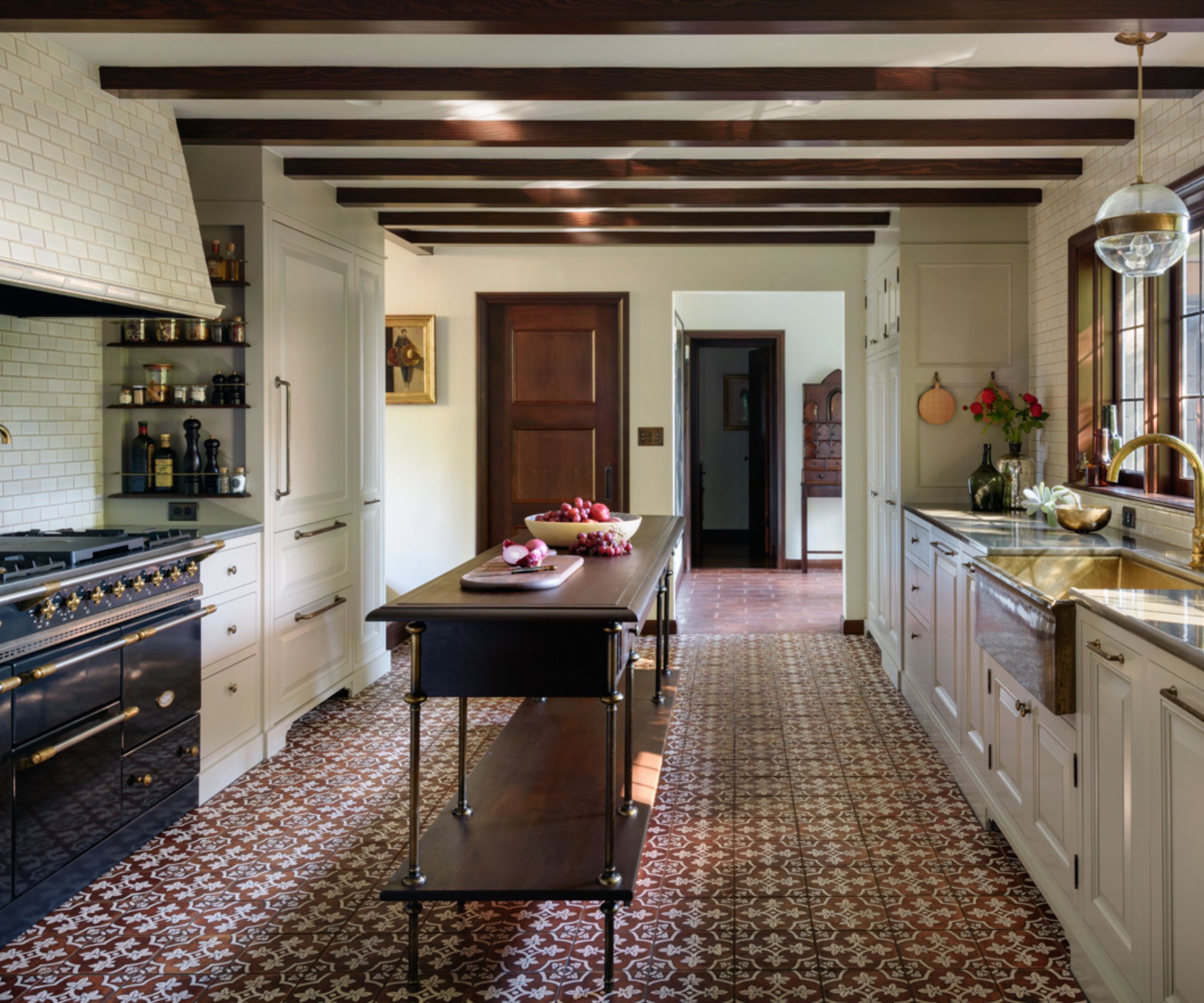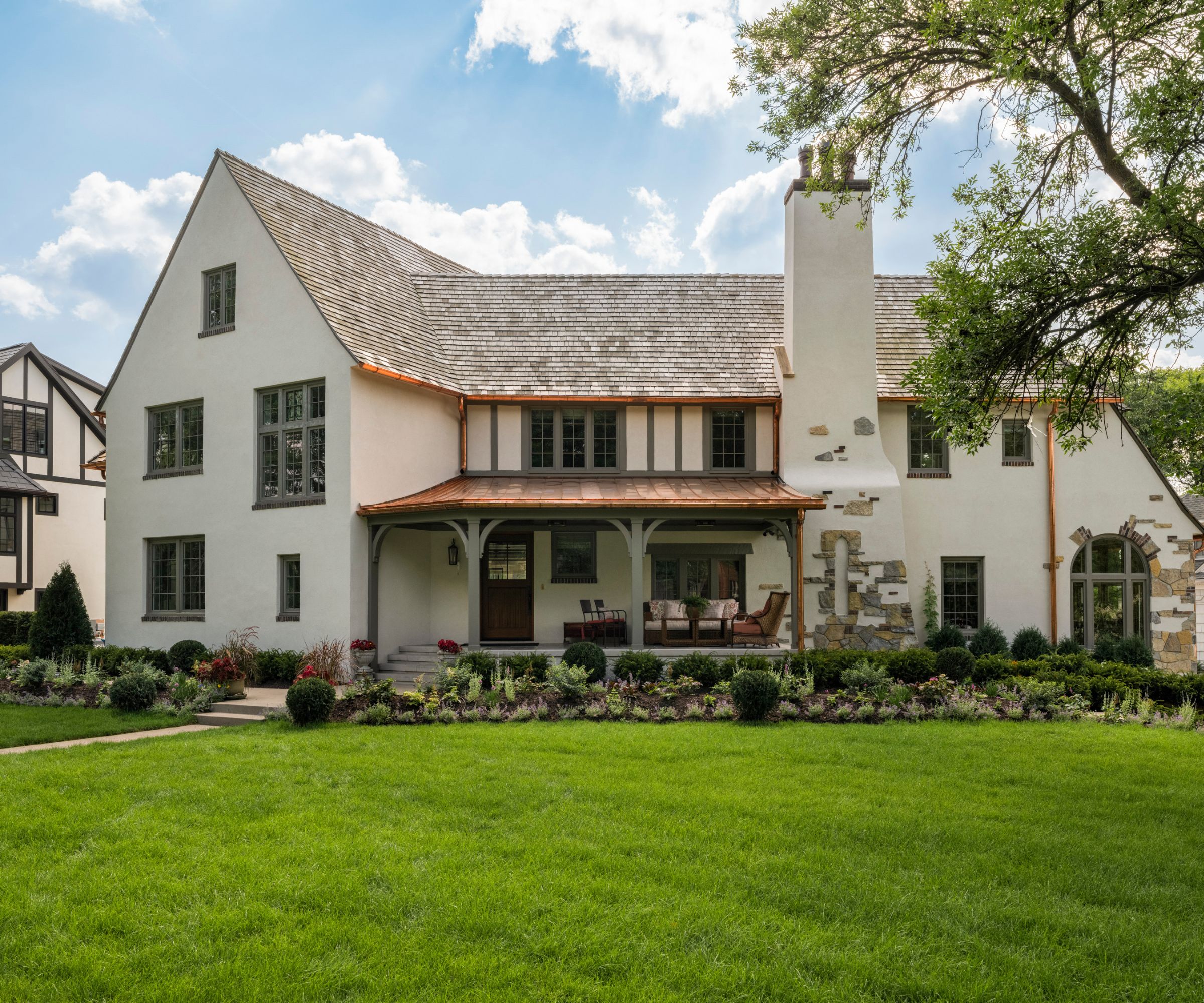
Known for their distinctive storybook facades and unique asymmetrical designs, Tudor-style homes were inspired by the charming Tudor architecture of England. A product of early 20th-century romanticism, the style became a staple architectural style in the United States and was heavily popularized for its charming, characterful, and quaint qualities.
A traditional house style, Tudor Revival-style homes are scattered across the country. With their ornate timbered exteriors, angular roofs, and uniquely shaped windows, Tudor-style homes blend classic Gothic features with cottage-like Tudor elements. It's not just their outsides that spark intrigue; often, their interiors are equally as rich, from high ceilings to stained glass windows, these homes are filled with character.
A reminder of America's rich architectural history, they're a popular property style today and come in a variety of shapes and sizes.
What is a Tudor Revival style house?
A result of early 20th-century Romanticism, Tudor Revival-style homes were inspired by the characterful exteriors of Medieval architecture (namely found in Europe). They were first introduced in the United States sometime towards the end of the 19th century and continued to flourish into the next century, popping up all over the country.
Typically, a Tudor Revival-style home can be distinguished by its half-timbered exterior (usually made from contrasting dark wood), unusual layouts, a steeply pitched roof, unconventional paneled windows, and a distinctive chimney that protrudes upwards. You might also find an ornate front porch or veranda attached to a Tudor Revival home, or a grand arched doorway that radiates rustic charm.
5 Tudor Revival style homes
These five Tudor Revival-style homes are unique in both exterior and interior, yet all showcase the brilliance of this one-of-a-kind architectural style. Each embraces character and eccentricity in the best way possible.
1. A New York Tudor home with a transitional interior

Interior designer Dorothee Junkin explains she 'played a game of shuffle', reimaging the layout of an early 20th-century Tudor Revival home located in Westchester, New York.
‘I always enjoy the unique challenges and opportunities that come with working on older buildings,' she says. 'They can be capricious and stubborn, but they also have a lot of character and a way to guide you towards unexpected and beautiful spaces.'
Describing the architectural style, Dorothee says, 'Tudor Revival properties with their steeply pitched roofs, multiple gables and decorative half-timbering are character homes. However, if left unmonitored and unattended, a neglected corner can quickly cause a host of problems.'
'While it was unfortunate that most of the original interior features had been lost, collaborating with our wonderful clients to revive their house was a truly delightful experience. The result is a remarkably livable home that blends aged and contemporary elements, with a comfortable flow and deeply enjoyable spaces.’
2. A grand Tudor Revival estate in Georgia

An example of newly built architecture inspired by historic design, this Tudor Revival-style house, located in Marietta, Georgia, is an impressive feast for the eyes, standing proud in its idyllic setting.
Jessica Bradley, founder of Jessica Bradley Interiors, brought the home to life, fusing tradition with modernity. She says, 'Working on this home was a unique and inspiring challenge. While the architecture pays tribute to classic Tudor Revival, our goal was to soften and lighten its traditional formality. There’s a timeless elegance in the bones of the house, but we approached each space with a fresh lens, introducing warmth, approachability, and livability without sacrificing detail.'
She adds, 'What I loved most about this project was the opportunity to honor the architecture while making it feel tailored for modern family life. Every decision, from wood stain to fabric texture, was about striking that balance – respecting the grandeur, but letting the house feel like a true home.'
3. A charmingly quaint Texas Tudor house

Much like Queen Anne-style homes, this charming Texas home features a pair of stylized arched doorways and a prominent chimney, giving it a real sense of character and personality.
Kate Bendewald transformed this period property from neglected to prosperous. Acknowledging its distinctive architecture, Kate sought to enhance the bones of the building.
'This home was a real labor of love,' she explains. 'We worked closely with the clients and the builder to preserve and bring back some of the original details. For example, when the client wanted the old single pane glass doors removed (for energy efficiency), we were able to reuse one in the pantry area.'
While its interiors are refreshingly contemporary yet sympathetic, its exteriors feel authentic, a shining example of traditional architecture at its best. The arched doors, the unique chimney, and the array of windows scattered around the home all give the property a lovable charm.
4. A Tudor style house filled with original features in Portland

Jessica Helgerson has a design studio in both Paris and Portland. She recently revived a historic Tudor home in Portland, updating its floor plan and enhancing its original features with new woodwork that matches the original design.
'This gorgeous Tudor home had several rooms that were already absolutely lovely, amongst them the living room and library,' Jessica says. 'For those, our goal was simply to preserve the rooms and furnish them. We took our cue from those spaces – with their dark douglas fir beams, paneling, and cabinetry, leaded glass windows, plaster walls, and simple details – for the rooms that we entirely re-imagined (amongst others the primary bedroom and bath, the kitchen and butler's pantry, the breakfast nook). '
She adds, 'That’s always our method when approaching a project with good bones; to very carefully study the existing house and then reflect the best parts of it in the new work we do. This is how we avoid our work feeling dated, and instead create rooms that feel right for the house itself.'
5. An idyllic Tudor in Minneapolis

Built in 1927, this Tudor Revival style home is located in a Minneapolis suburb. Despite its age, the house feels refreshingly contemporary, both inside and out, blending history with modern finishes.
Its characteristic porch, prominent chimney, and array of mismatched windows are tell-tale signs of the classic architectural style. Acknowledging its surroundings, the exterior of the house has been painted cream, a refreshingly modern addition not often seen paired with this property style. Its unique decorative brick features give the facade intricacy and character, paired with the asymmetrical windows and door.
Tudor Revival style homes are filled with charm and serve as enduring examples of America's broad architectural history. From Queen Anne to Ranch style homes, Tudor style falls somewhere in between these two distinctive looks, taking inspiration from Medieval architecture and fusing it into the American landscape.







